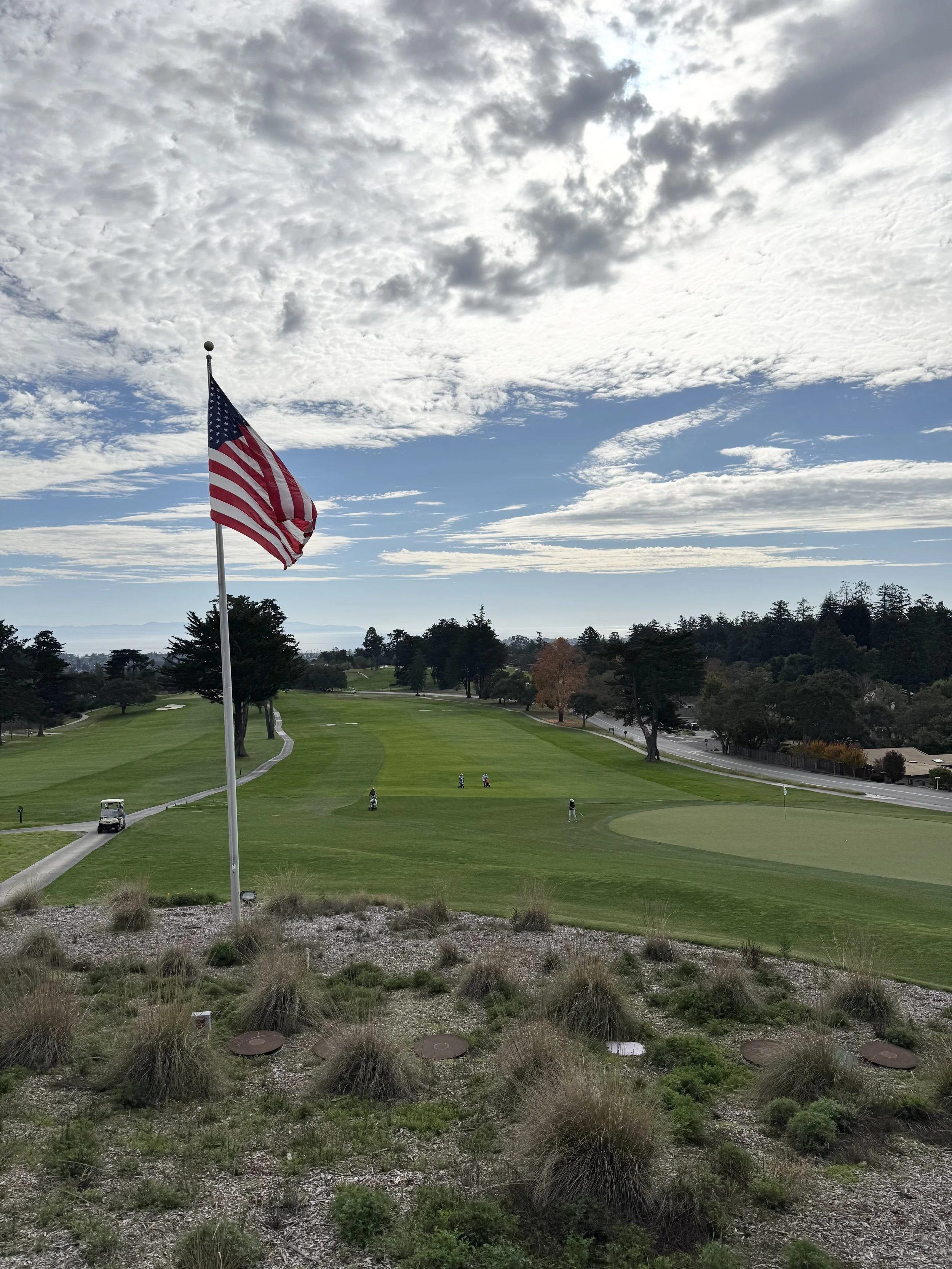The Pasatiempo Formula
William Carlson
Professor Swanson
Writing Arguments, Cal Poly San Luis Obispo
December 2nd, 2024
Types of golf courses or golf clubs are generally divided simply into those that are public and those that are private. Courses that are open access to anyone who will pay, and member-only establishments. While this categorization isn’t necessarily wrong, it does leave out a lot of details and better alternatives. Perhaps the best is a combination of the two, which has been done to great success at many courses. The private-private hybrid is more prevalent in the United Kingdom, but the likely best well-known example in the U.S. would be Pasatiempo Golf Club in Santa Cruz, CA. It is a private club that has tee times available for public play. More courses should follow the Pasatiempo model by having an equity membership with public access, which would benefit both the clubs and the general public.
Golf courses today, as stated previously, are predominantly either private or public. Private clubs have a select membership of people who pay dues to access the course and other amenities. Public courses, whether municipal, resorts or privately owned, allow access to golfers for an individual daily fee. However, these models are often posed with issues related to their structuring. Private clubs rely solely on their membership for funding, unless owned by a private clubs corporation. Some prominent examples of these corporations are Invited Clubs and Troon Golf, according to the Keiser University College of Golf. Nonetheless, there are problems and challenges for private clubs regardless. The most significant issue is the ability of clubs to retain their members or attract new ones. Many factors have led to this struggle, including aging populations, lack of disposable income, and competition from public courses (Bourque, 2023).
Public courses fall victim to many of the same issues as private ones. Aging populations, lack of disposable income, etc (Cage, 2013). But they also have many of their distinct issues that private clubs do not have. If the club is owned by a municipality or has other disconnected management, the establishment can be subject to neglect. For example, if a municipal course isn’t given enough money to properly maintain its facilities by the municipality, it will lead to a decline in quality. Which will eventually lead to a decrease in revenue due to loss of play as the course conditions get worse. This removed management also makes the golfers who play at the course have less of a connection to the property due to not having a say in how things are done like they usually do at a private club. This makes them more likely to play elsewhere, losing the course business. According to the Southern California Golf Association; golfers don’t play for a financial reason, they play for passion. People are more likely to play if they have a reason to be passionate about it.
The formula to eliminate or at least minimize their problems has existed in golf since its initial formal years. In the earliest days of golf in Scotland, the linksland where the game was played was often public property. This meant that no one group or club owned the course, there were often multiple clubs playing on the same course. Not until the game arrived in the United States in the late 1800s did courses become private with only access by one club. “...American golfers set themselves apart from other social classes in an essentially class-less society. The “golfer” signified membership in the upper social class”(Varner, 2000, p7). This culture of class and separation persists to this day in the U.S. But, many famous courses across the United Kingdom are still accessible to the public today as golf didn’t become as gentrified as it had in the U.S. But, there are some examples of private clubs in the U.S. that are open to the public. One of the most well-known examples is Pasatiempo Golf Club.
Pasatiempo is a private equity club, where each member of the club purchases a share in Pasatiempo Inc. to become a shareholder. As a shareholder, the member has access to the club’s facilities and is therefore invested in the success of the club (Pasatiempo Inc. 2024). This leads to a membership being involved more in the processes of the club, including a recent multi-million dollar renovation of the course, completed this year. According to Michael Zaballos, the project was about; “paying it forward to the next generation of golfers”. Many clubs have equity memberships like Pasatiempo. But what makes Pasatiempo different is that it is accessible to the public. Seven days a week the club sets aside tee times that are open to public play during the less demanded hours. Anyone can book these tee times and pay to play one of the top 100 courses in the country, in a private club setting (Morrissett, 2024). Members are also often paired with guests, during playing times further adding to the experience and mixing golf communities that are often kept separate by typical private and public formats. This not only provides a unique opportunity for public golfers, but it also benefits the club by bringing in profits while the course isn’t being used by members. There is no reason why this club model shouldn’t be widespread across the U.S. because it already is in the U.K., and where it is implemented it has proven to be successful.
There are critics of the equity-public access club model. As previously stated, the origins of golf in America led to it becoming a gentrified sport. Being a member of a private club was, and still is largely a display of social standing. And this is what leads to the pushback towards private clubs welcoming public golfers, many members do not want to lose their sense of exclusivity. In recent years many clubs have given up their tax benefits as greenbelts to keep discriminatory policies on who can become members, with African Americans and women being the most common victims (Chambers para.25). If clubs are willing to give up these large sums of money to exclude certain groups, it is not surprising that they would oppose opening their doors to the general public.
But golf culture is changing, it is no longer a solely elitist sport. Today 75% of golf courses are open to the public, with 2,500 of them being municipal, and 7,700 being daily fee facilities (NGF, 2023). Since 2022, the number of golfers who have gone on golf trips has been 20% higher than the historic average, now reaching over 12 million (NGF, 2024). This is reflective of the new golf culture of today. In a world where in general people are becoming more focused on experiences, golfers are following suit. People no longer want to just play all of their rounds at the same few courses near where they live. They want to travel to see different courses in different places around the world. Partially due to a growing interest in courses themselves and their quality.
This leads to the overarching question; where does this leave private clubs? In the current golf boom, these institutions have to decide where they stand in this new golf world. Golf is a sport infatuated with its history, and much of the appeal of certain courses comes from their storied pasts. This is perhaps the greatest asset of private clubs, there is a sense of history and tradition that is often nonexistent at public courses due to not having invested members. This is why the equity membership with public access model, which is exemplified by Pasatiempo is the best. It is a marriage of the two, old world tradition combined with the enthusiasm and opportunity of the modern market. It breaks down barriers for the benefit of all and serves as an example of the possibilities of a new era for American golf.
Works Cited
“Becoming a Member | Pasatiempo.” Pasatiempo.com, 2024, www.pasatiempo.com/golf/membership. Accessed 9 Dec. 2024.
Bourque, Casey. “Top 3 Reasons Why Private Golf Courses Are Struggling in 2023.” KPI Golf Management, 5 Sept. 2023, kpigolfmanagement.com/private-golf-course-struggle/.
Chambers, Marcia. “Private Golf Clubs’ Moment of Reckoning.” GolfDigest.com, www.golfdigest.com/story/private-golf-clubs--moment-of-reckoning.
“Equity vs. Non-Equity Golf Club Memberships.” PrivateCommunities.com, www.privatecommunities.com/blog/equity-vs-non-equity-golf.htm.
Kessler, Craig. “It Takes a Community: Lessons from the Public Golf Endangerment Campaign | FORE Magazine.” FORE Magazine | Southern California Golf Magazine, 22 July 2022, www.foremagazine.com/issues/summer-2022/it-takes-a-community-lessons-from-the-public-golf-endangerment-campaign/. Accessed 9 Dec. 2024.
Morrissett, Ran. “Top 100 Courses in the U.S. For 2024-25: America’s Finest Designs, Ranked.” Golf, 12 Nov. 2024, golf.com/travel/courses/best-golf-courses-united-states-2024-2025/.
National Golf Foundation, and National Golf Foundation. “New Heights for Golf Tourism? - National Golf Foundation.” National Golf Foundation, 23 May 2024, www.ngf.org/new-heights-for-golf-tourism/#. Accessed 9 Dec. 2024.
National Golf Foundation. “Golf Research and Industry Data.” Ngf.org, 2023, www.ngf.org/golf-industry-research/.
Trimark_admin. “Private Club Equity Conversion | Concert Golf Partners.” Concert Golf Partners, May 2018, concertgolfpartners.com/2018/05/01/private-club-equity-conversion/. Accessed 6 Dec. 2024.
Varner, Monica Kay. “American Golf and the Development of a Civilized Code of Conduct: A Study of Ritualized Symbolic Rules and Standards of Civility in the American Golfing Society.” Oklahoma State University, Stillwater, Oklahoma, pp. 1-11.
Wilson, Eric. “4 Popular Golf Management Companies.” Keiser University College of Golf, 6 Jan. 2021, collegeofgolf.keiseruniversity.edu/4-popular-golf-management-companies/.



